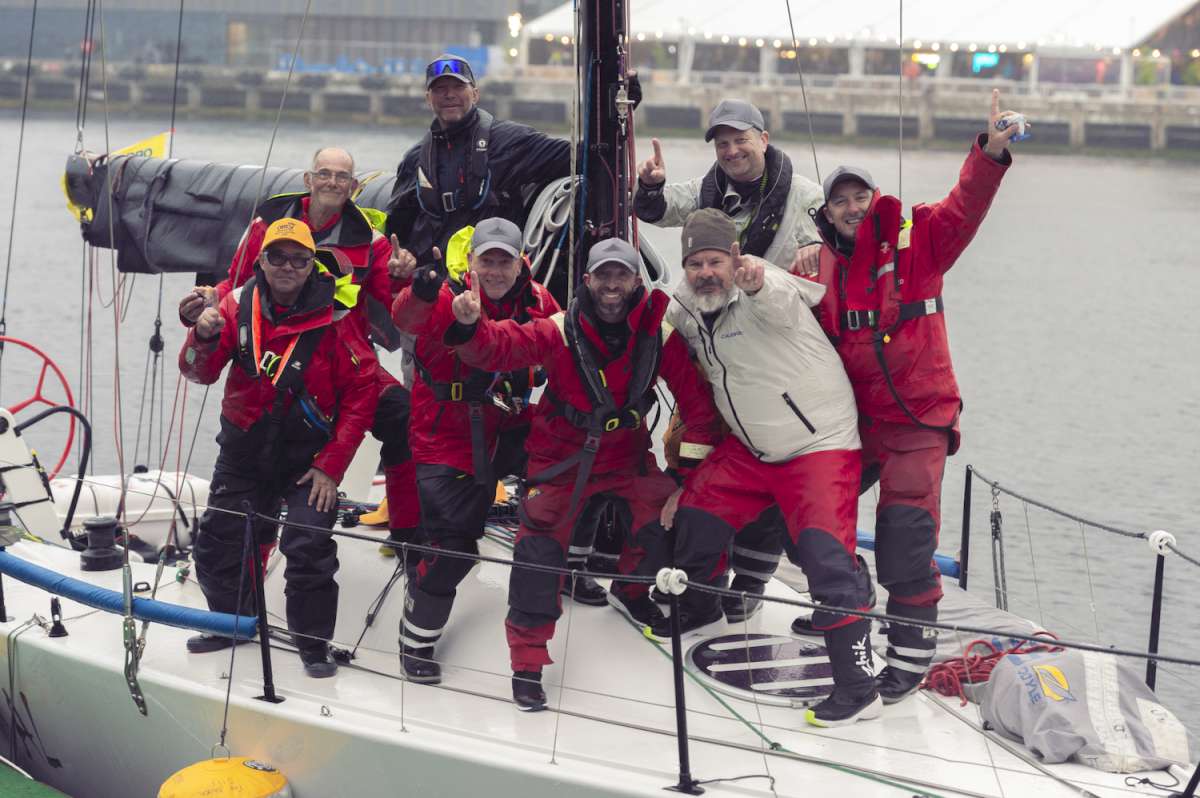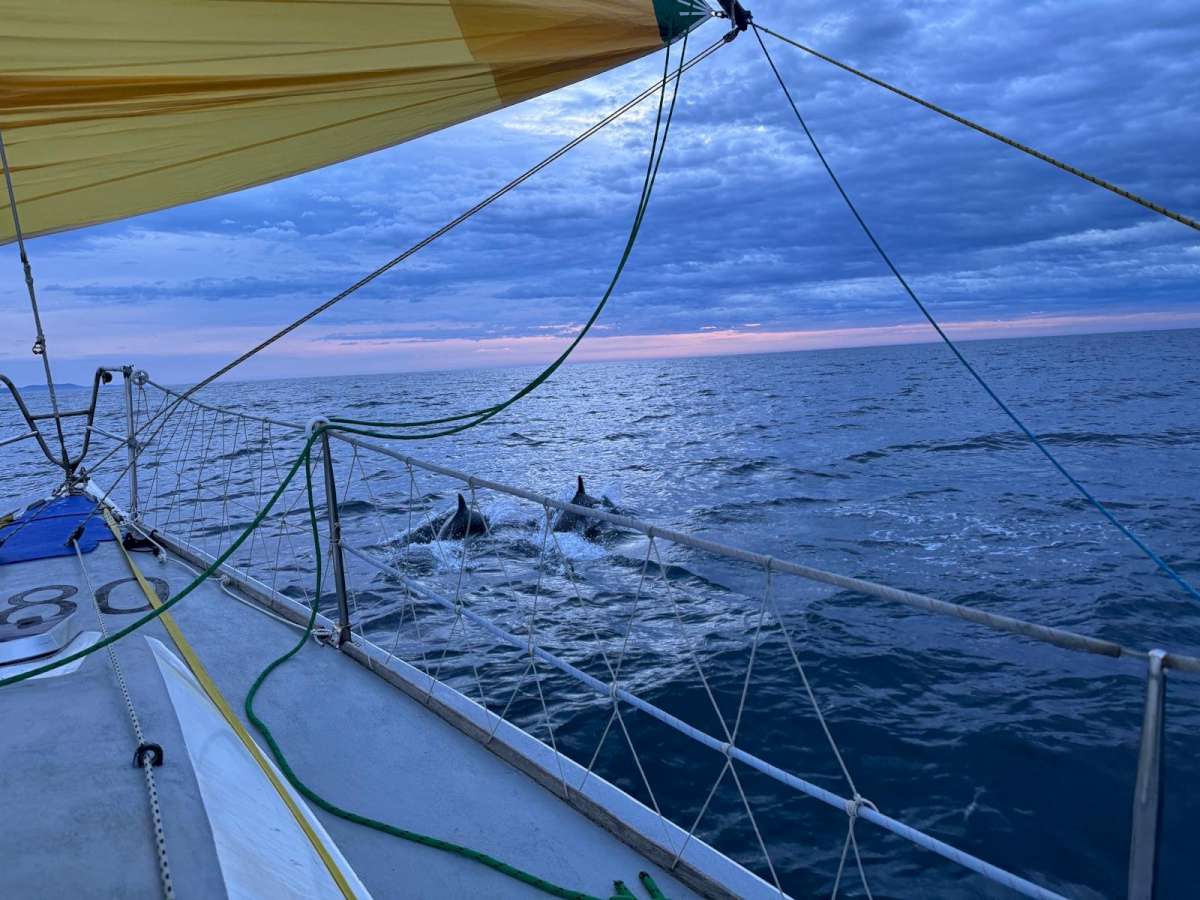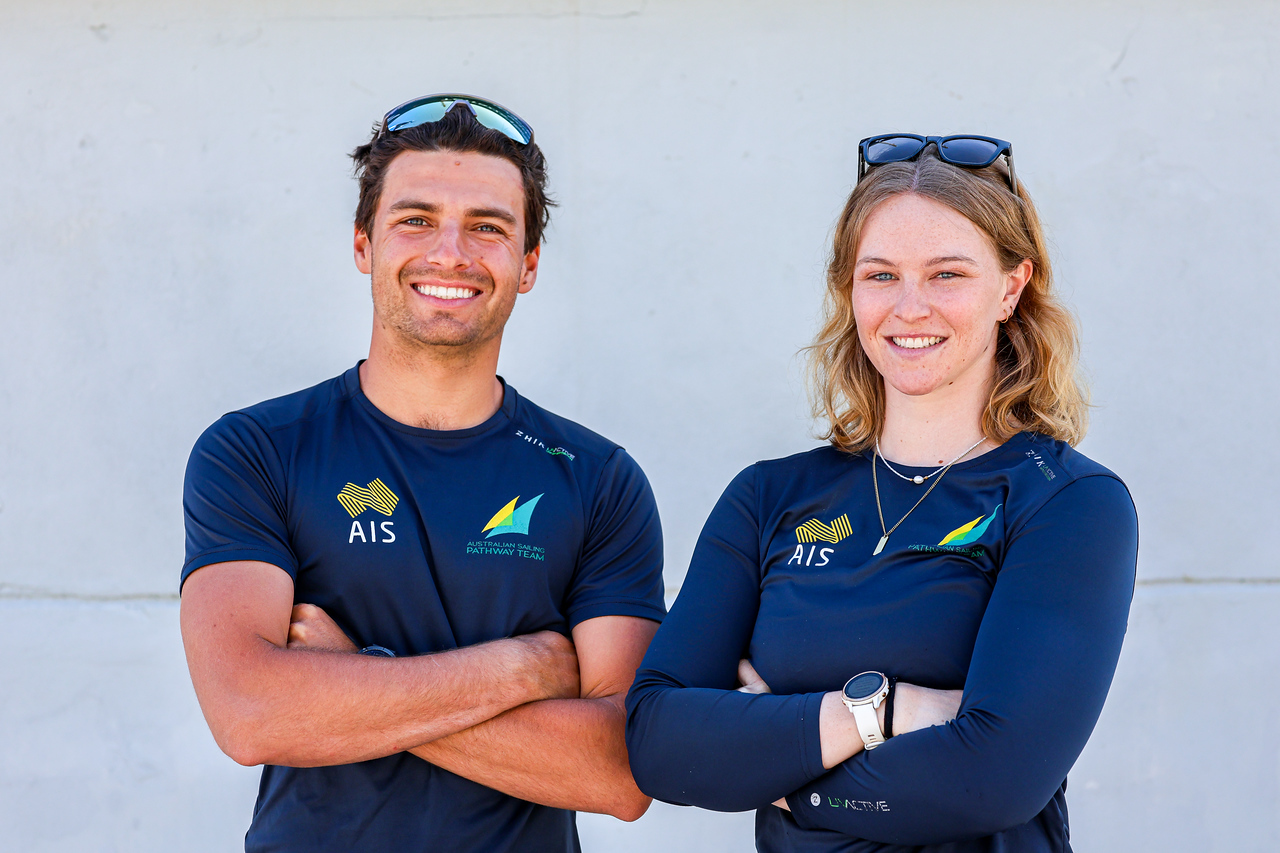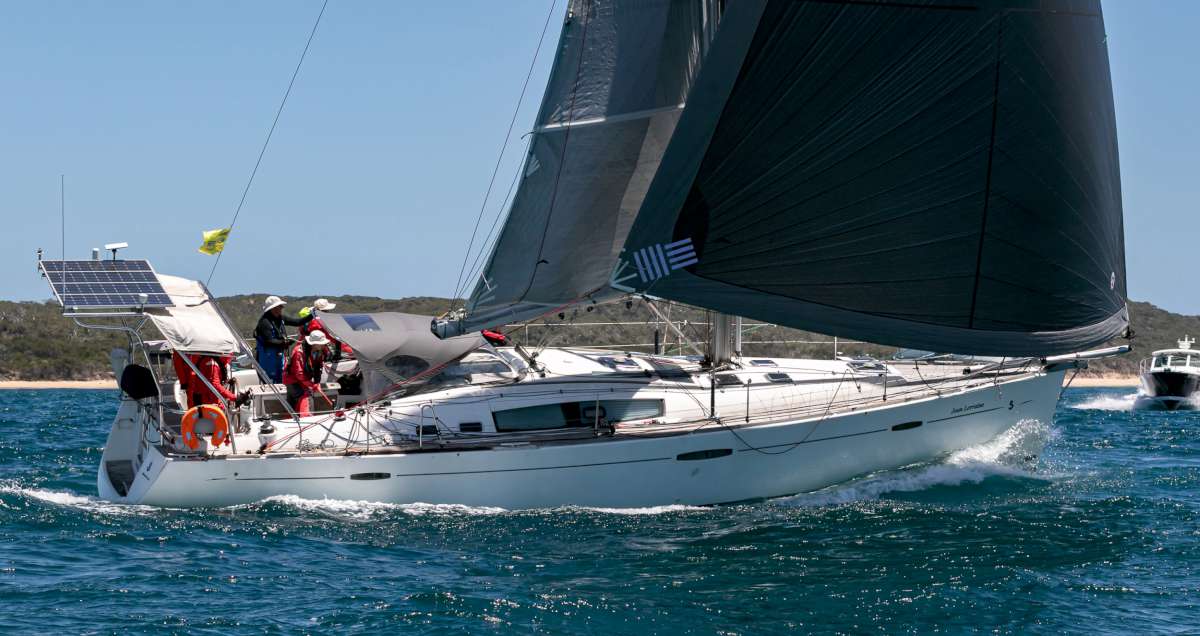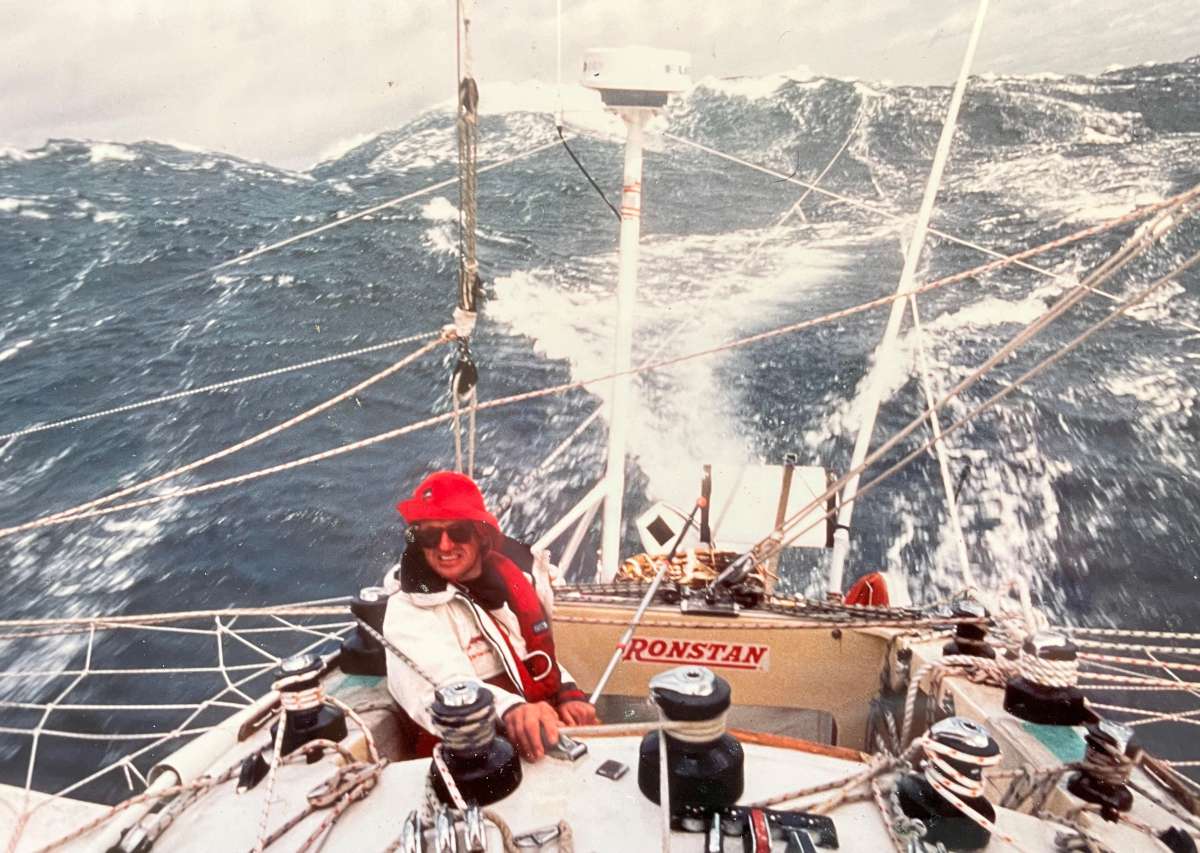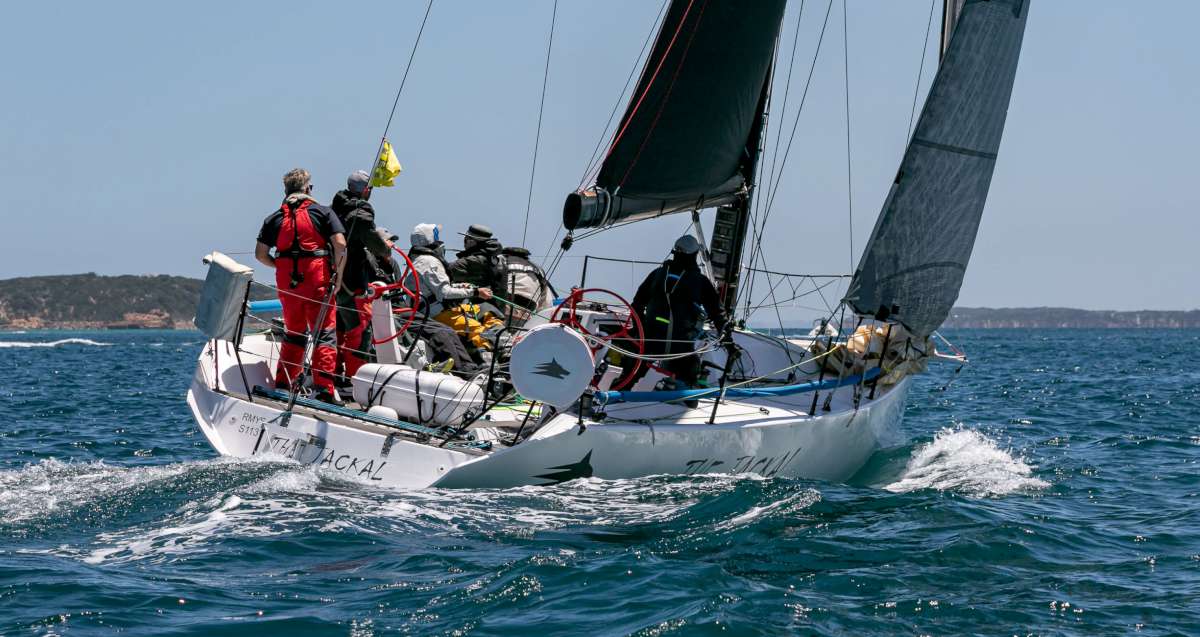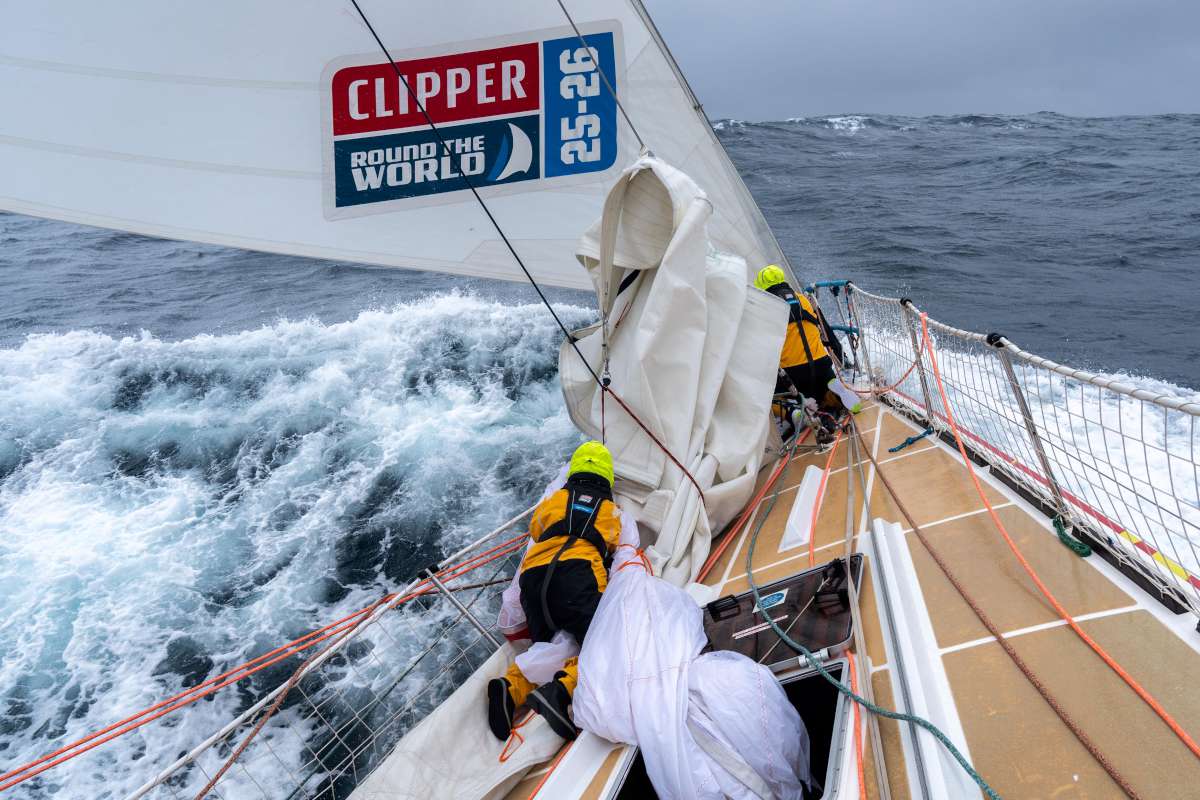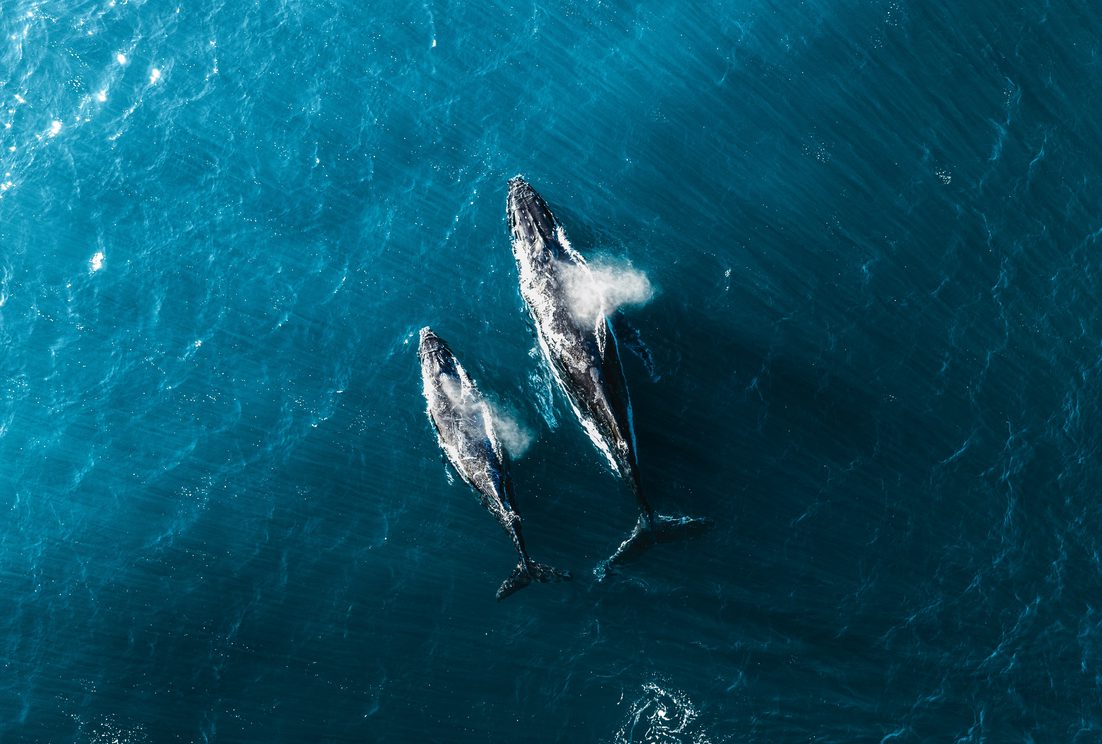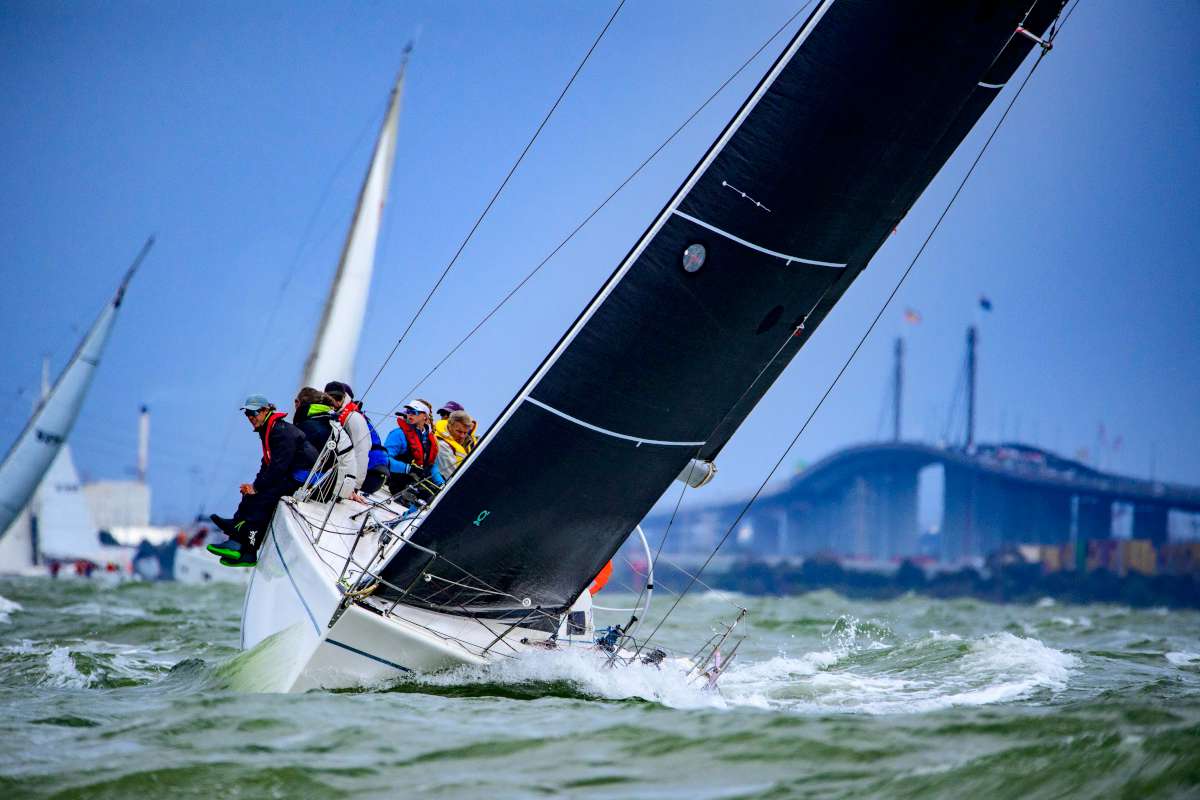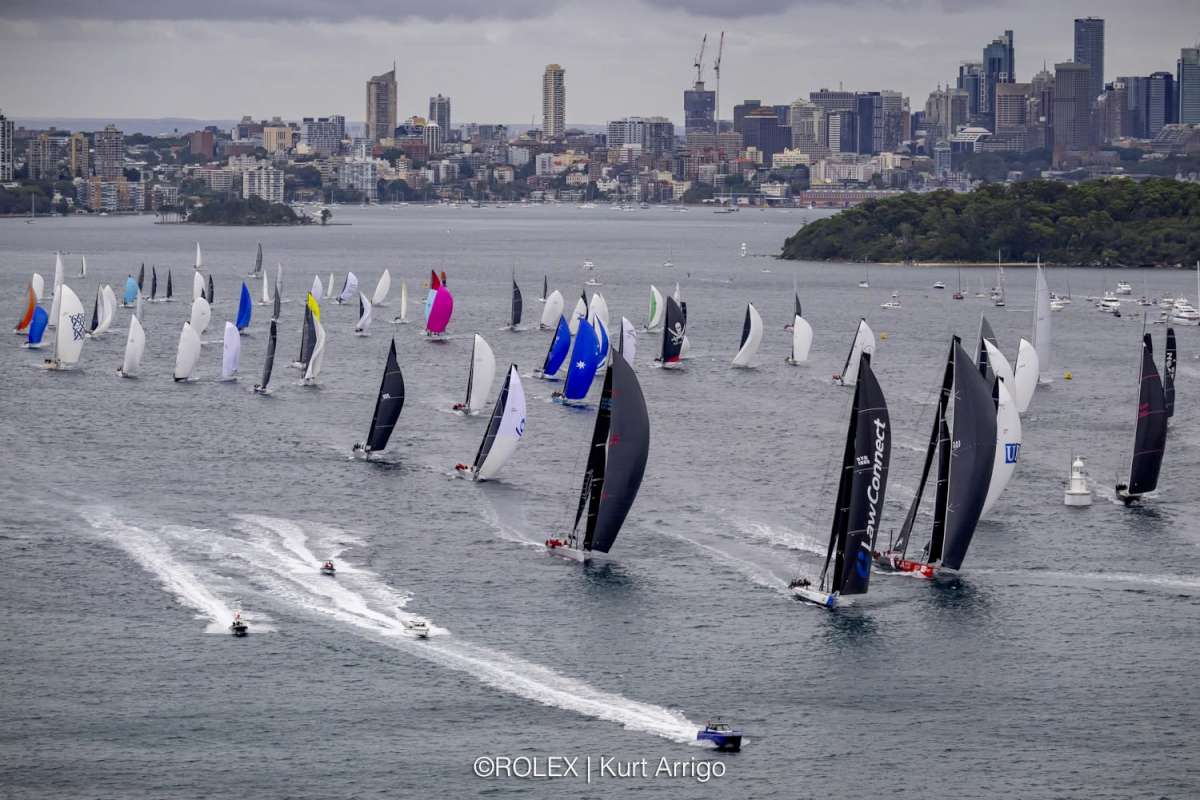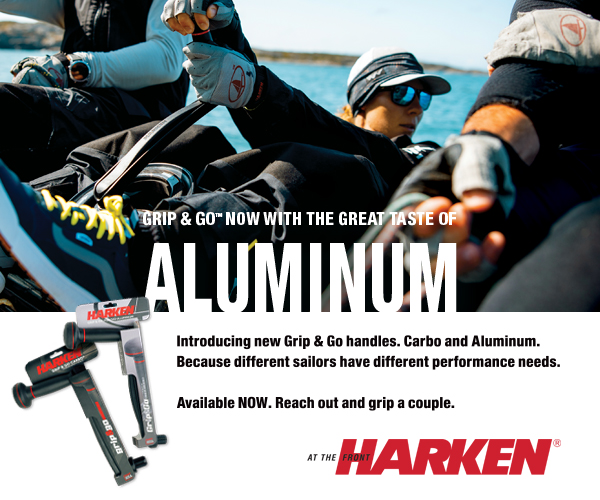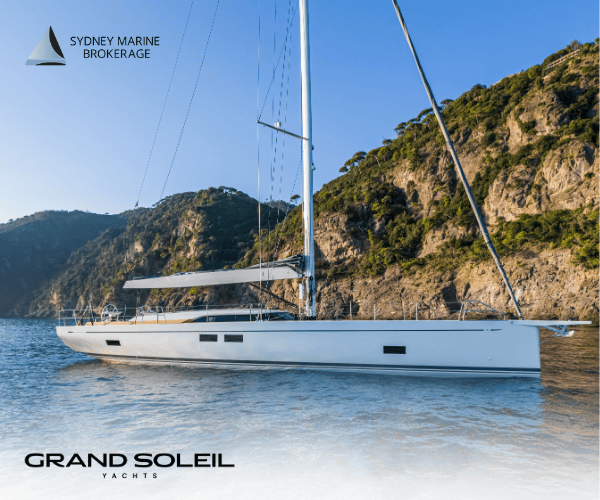We have owned our X-43, X-Pat, since 2010. We initially cruised around Pittwater and Sydney Harbour and then gradually went further afield. In December 2015 we set off on our first major trip to cruise the east and south coast of Tasmania. Like most who take the plunge we had no idea how we would get on living on the boat for two months. How would we fill our time?
Once we had overcome the hurdle of making the crossing of the Bass Strait, we began to relax into the cruising way of life: anchoring in beautifully secluded bays and visiting equally secluded beaches. It did not take long for us, however, to observe that the beaches were not as pristine as they first appeared.
A walk along the tideline revealed pieces of plastic debris mixed in with the seaweed and shells washed up on the beach. But where had this plastic originated? How did it get to these remote locations? Initially I simply photographed what I found, it seemed like too big a task to start picking it all up.
When I returned to Sydney I started doing a bit of online research into ocean plastic pollution and started to realise the true scale of the problem and the large number of initiatives, which are going on around the world to try to resolve it.
Background
We are not the only people to have been affected by the realisation that the modern consumer society is putting too much pressure on our environment. In 2005, Ellen McArthur broke the world record for the fastest solo circumnavigation of the world. Sailing around the world solo gives you time to think. Ellen came to the realisation that society is not managing resources in the way that we manage them when on a boat.
On land we seem to think these resources are unlimited and we use them accordingly. This has become known as the linear economy: where we mine resources, make stuff, use it, often for a limited time or even just once and then throw it away. In 2009 Ellen retired from professional racing and founded The Ellen MacArthur Foundation: www.ellenmacarthurfoundation.org, a charity aimed at accelerating the transition to a circular economy, where resources are valued and products are designed so that the materials can be re-used and are rarely, if ever, thrown away.
Ellen is not the only yachtsperson to have seen the light while sailing. Way back in 1987, the Australian yachtsman Ian Kiernan competed in the BOC solo around the world challenge on his yacht Spirit of Sydney. Many years later, we had the privilege of sailing to Antarctica from Ushuaia on his old yacht and so got some feel for the experience of sailing this wonderful yacht.
Like Ellen, Ian was struck by how much rubbish and pollution he encountered. He returned home to Sydney and started a campaign to clean up Sydney Harbour. This grew into the now widely known ‘Clean Up Australia’ organisation: www.cleanup.org.au.
The numbers
Since our trip to Tasmania in 2015/16 I have read many reports on the issue of plastic pollution, participated in forums, attended conferences and followed numerous organisations on social media.
When you start reading about this issue you begin to realise that the scale of the problem is absolutely immense. In fact it is such a huge problem that it is almost impossible to get your head around the scale of it. Here are a few statistics: since 1964 global plastic production has grown from 15 million tons (mt) to 311mt per annum in 2014; 78mt of that 311 was used in plastic packaging, which is generally used once and thrown away; worldwide only 14 per cent of packaging is collected for recycling and only 2% is recycled into a product of similar quality.
32% of packaging leaks into the environment which is equivalent to 8mt/annum entering the oceans; 80% of that leakage occurs on our doorstep, in Asia, where over 700 million people live in poverty and have no access to formal waste collection.
In the ‘business as usual’ case there will be more plastic than fish in the ocean by 2050.
The beach clean-ups
Having photographed five beaches in Tasmania, four in New South Wales and ten on various trips overseas I decided I needed to do more. At this stage I discovered Tangaroa Blue: www.tangaroablue.org, an Australian not-for-profit organisation dedicated to the removal and prevention of marine debris.
What I liked about Tangaroa Blue was they not only encourage us all to clean up the beaches, but also to record what we find and put the information into the Australian Marine Debris Initiative (AMDI) database. In this way a record of what is found on our beaches is built up and, in many cases, this can give an indication as to the likely sources of the debris.
Since 2004, 9.9 million pieces of data have been added to the database, creating a comprehensive overview of what is being found. It continues to grow.
So, motivated by what I had researched, I ordered our beach clean-up kit from Tangaroa Blue and headed off to the beach. This coincided with the start of a four month cruise from our home port of Pittwater up to the Whitsunday’s.
Our first clean-up was on Hallett’s Beach in Broken Bay while we were waiting for the weather to improve. On this tiny beach we found nine plastic straws, nine plastic food wrappers and 48 polystyrene remnants, mainly from packaging and foam cups.
During this clean-up we met a local guy who had visited the beach in June after a storm and had found the beach piled high with debris. He told us he had collected a large bucket of tennis balls, presumably originating from a tennis club somewhere up the river!
After that we were off. We cleaned up beaches in the Percy islands, Digby Island, Thomas Island, Woodwark Bay, Cid Island, Lindeman Island and many more. We even did a one kilometre section of the world famous Whitehaven Beach.
All of them had plastic on them.
In fact since starting this mission we have not found a single beach which is plastic free. A record of our findings can
be found at: www.tideline.com.au.
The results
So what did we find?
Well, it varies across different beaches but there are some common themes, which are found nationwide. The breakout box shows the top ten items recorded in the AMDI database in the last two years. The figures are absolutely staggering and that is just the tip of the iceberg.
Did you know that cigarette filters are plastic? They remain in the environment for tens if not hundreds of years.
Exposed to ultra-violet light plastics gradually break into smaller and smaller pieces, but they never really go away. On one beach I tried to pick up a piece of blue plastic in amongst the seaweed. As I tried to pick it up it just disintegrated into smaller and smaller pieces, just like a very fragile eggshell. As the pieces get smaller they get more difficult to recover and potentially more dangerous to the ocean wildlife.
Many will have heard of the Great Pacific garbage patch. This is the best known of what are actually five gyres, which are areas of the ocean where debris is concentrated by ocean currents. I once read in a cruisers’ forum that the Pacific garbage patch was a myth. A guy had sailed right through the middle of it and had not seen any debris. I think he was expecting to be able to drop anchor and go ashore on an island of debris!
The reality is somewhat different, with most of the plastic being small pieces suspended below the surface. One study suggests the density is 5.1 kilograms per square kilometre. So, just because you cannot see the debris, it does not mean
it is not there.
A study by the CSIRO in 2014 found that around 75% of rubbish along the coast of Australia is plastic. Most is derived locally but some comes from overseas. This finding certainly reflects what I have found on our own beach clean-ups. In coastal and offshore waters most of the floating debris is plastic with densities varying from a few thousand to more than 40,000 pieces per km².
The impact on wildlife
If you want to really start to understand the impact that plastics are having on the ocean think about the wildlife that feed on the oceans.
Seabirds feed on the surface of the ocean. One such bird is the Flesh Footed Shearwater, which nests on Lord Howe Island and has been extensively studied by Ian Hutton from Lord Howe Island and Dr. Jennifer Lavers from the University of Tasmania. Their studies have shown that since 2005 there has been a gradual increase in the amount of plastic found in the birds’ stomachs and in the proportion of the population ingesting plastic. In one case 274 pieces of plastic were recovered from a single deceased bird. This represented 14% of the bird’s bodyweight.
In many cases the plastics found in birds can be identified as originating from Australia. Items like bottle lids; balloon clips and caps from milk cartons are regularly retrieved from the stomachs of these birds. Further studies are ongoing but the data so far clearly indicates that this is not good news for our ocean-going bird population.
If those figures do not convince you we have a problem then go and see a film called ‘Blue’ or visit the website: www.bluethefilm.org. This beautiful film, which is written and directed by Sydney based filmmaker Karina Holden, covers a number of environmental issues relating to the oceans including plastics.
In the film, Ian Hutton and Jennifer Lavers are seen flushing out the stomach of a young Flesh Footed Shearwater, which has yet to leave the nest. The poor bird had been fed pieces of plastic by its parents and was consequently full of plastic even before it left the nest. It is heartbreaking.
A study of turtles stranded in Queensland between 2006 and 2011 found that 54.5% of pelagic-sized turtles had ingested debris, particularly rubber items such as balloons. During adolescence turtles enter what is know as the benthic phase of development. This is a foraging phase, which is estimated to last up to 25 years. These turtles were found to have ingested a high proportion of soft plastics, lending credence to the theory that they were mistaking plastic wrappers and bags for jellyfish.
If you have been snorkelling from your boat and visibility has been good, you will have no doubt noticed the myriad of creatures floating in the water. These are tiny plankton, jellyfish and lots of other creatures far too numerous for me to identify and way beyond my knowledge. It can be like swimming through a soup and that soup is what so many creatures rely on for food. Indeed, much of this soup lies towards the base of the food chain.
But now this soup contains plastics too. These are microplastics that can be too small to see with the naked eye.
These microplastics are so small that they have been found in plankton and even in our precious corals. They can be the result of larger pieces of plastic breaking down. They can be microbeads, such as those found in many exfoliating products, or they can be from other sources.
Recent sampling off the NSW coast, by a team from Macquarie University, found the most frequently found plastics were fibres from synthetic clothes. Synthetic clothing now far outweighs that of natural fibres. When you wash synthetic clothes, fibres are produced and the typical filter systems in your washing machine and the wastewater treatment plants do not capture them. So they end up in the ocean.
A common source of microplastics is from polystyrene. Polystyrene is a useful material in the marine industry. It is light, it floats, it has great insulating properties and it’s cheap. Not surprisingly then it has lots of applications. It’s used for buoys, fishing floats, cooler boxes to name but a few.
However, it is also fragile and pieces breakoff easily. Once in the environment it is almost impossible to clean up.
Sadly this became all too apparent just a few months ago when storm Emma hit the island of Anglesey in North Wales, UK. Pontoons at Holyhead marina, which contain polystyrene to make them float, were ripped apart spreading large volumes of debris over a 41km stretch of some of the most beautiful coastline in the country. The pictures on the BBC website are sobering when you consider how many similar marinas we have here in Australia.
So what can we all do?
In the face such an overwhelming challenge it is very easy to conclude that you and I as individuals cannot make a difference. However, nothing could be further from the truth.
Thousands of motivated individuals have taken to social media over the past ten years to raise awareness. A multitude of organisations have become established in Australia and worldwide (see breakout box) raising awareness and cleaning up beaches.
As a result, mainstream media have got involved. The ABCs ‘War on Waste’ series made people very aware of what our disposable lifestyle is doing to our environment. The BBC and David Attenborough’s ‘Blue Planet 2’, has transformed attitudes in the UK. The UK parliament has banned single use plastics in the houses of parliament and now even the Queen has announced a ban on all disposable single use plastics on royal estates.
The fact is that fifty years ago we survived perfectly well without this stuff and we need to get back to that way of thinking.
As cruisers I believe we have a better awareness than most of what we use and in particular what waste we generate. To do our part in the war on plastic pollution, here are a few tips as to what we can do:
-
if you are a smoker do not throw butts overboard. Stub it out and put it in the bin
-
if you use a disposable lighter, don’t dispose of it in the ocean. I am forever finding these lighters on the beach
-
don’t use plastic bags for your provisioning. Get yourself some reusable bags and remember to take them with you
-
don’t use plastic clothes pegs. When the wind blows a few will inevitably end up in the ocean and I am forever picking these up on beaches, even in remote spots
-
if you suffer from birds roosting on your boat, don’t use plastic bags or other plastic deterrents to stop them. These inevitably blow off.
-
ban polystyrene from your boat and support the banning of polystyrene in the marine industry in general. Charter companies could help by delivering provisions in robust crates, not in polystyrene crates, which disintegrate. So many floats and buoys used by fishermen are polystyrene
-
if you fish from your boat, then be extra careful with fishing line. In the last two years over 157km of fishing line has been recovered from Australian beaches. Finding dead birds and turtles washed up on the beach, entangled in fishing line is not unusual
-
if you fish with bait be careful that the bait bag doesn’t blow overboard. These are commonly found on remote beaches
-
if you like fizzy drinks then get a soda stream machine. This drastically reduces the consumption of plastic bottles and saves a lot of room on board
-
if you use plastic drinking straws on your boat then please replace them with paper ones or reusable stainless steel ones. Encourage beach side restaurants to stop using plastic straws. There are alternatives out there (see Abell Point Marina item in Waterfront: Ed).
-
if you have a washing machine on your boat then fit a filter to minimise the synthetic fibres going overboard. You can also encourage your favourite marina to fit filters to their washing machines. A company called Filtrol makes them and they are simple to fit.
-
when you are passage planning and thinking about where you are going to get provisions and fuel, also think about where you are going to dispose of waste. Research which marinas have recycling facilities. Just because a small marina has a skip bin for boaters to drop off a bag of waste, it doesn’t mean that’s a good option if it all goes into a small local landfill or gets burnt
-
get yourself a ‘keep cup’ for that morning coffee, rather than using disposable ones
-
get involved in beach clean-ups. There are lots of organisations around Australia and some are listed in this article. If there are no clean-ups near you then organise one yourself. We like to clean up on remote beaches that aren’t covered by regular clean-ups. Get a kit from Tangaroa Blue and off you go
-
balloons are not a regular feature on boats but sadly they are on our beaches. For some reason people think that it is cool to celebrate an occasion by releasing a mass of balloons. It is not cool. These balloons often end up in our oceans, choking the wildlife. In Portugal I even found the remains of a balloon with small batteries attached. Presumably they were lit up on release.
-
if you use nets for fishing, take extra care that they don’t go overboard. Entanglement in so-called ‘ghost nets’ happens all too often as abandoned or lost nets just keep on fishing.
The list could go on. It just takes a little time to think about what resources we are using, whether or not we really need to use it and, if we do, can it be reused for something afterwards.
Finally I will leave you with this: in 2016 close to 2.6 million people in Australia reported living in a household that owned some sort of boat. Many of these boats are made from glass reinforced plastic (GRP). When we started building boats from GRP in the 1960s no one thought about where they would end up.
GRP is a fantastic material and GRP boats have proven to be robust and long lasting. But, eventually these boats will reach the end of its useful/economic life. A quick web search reveals no facility in Australia for recycling all of the valuable material residing on our boats.
I have asked a number of people what happens to old GRP boats and the most common answer is that anything of value is removed and then the hull is crushed and placed in landfill. That is a massive waste of resource and an environmentally unacceptable solution.
There is a great business opportunity out there for someone to come up with a use for old GRP and to start recovering. ≈





